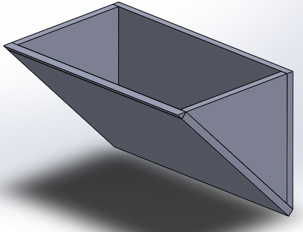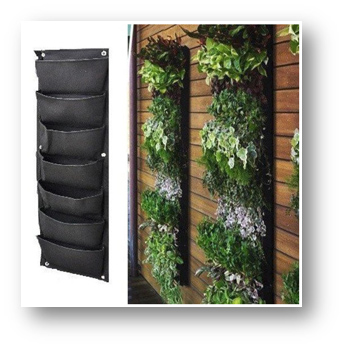Composting & Greenwall
The goal of the methane digester is to create an effective composting system for generating biogas from kitchen scraps to use for cooking, install a biogas stovetop, and install a composting toilet. This will require the following calculations: Theoretical Cooking Biogas Production and Theoretical Electrical Generation from Biogas Production. The timeline for the installation is one day and can be completed at any time after the siding is secured to the house, the kitchen countertops are installed, and the bathroom is finished.
Composting
Problem Statement
Due to the electric draw of an electric stove and the non-renewable nature of propane, the goal is to design and implement a stove that can run off the biogas created by the compost.
Design
The calculations are as follows:
- 1 liter of food waste can produce 200 liters of biogas
- 1 liter of food waste produces enough biogas to run the biogas stove top for approximately 1 hour
With 250 liters of gas storage, at full capacity the biogas stovetop can run for 1.5 hours continuously - At maximum production the biogas system is capable of producing biogas for cooking 1.5 hrs a day, every day
- Biogas has a calorific value of approximately 22MJ/m 3
- 1 liter of food waste can produce 200 liters of biogas
- Efficiency of a biogas turbine ϵ = 30% - 40%
- Max capacity of biogas unit for biogas storage is ≅ 250L
(22,000,000J/m 3 of biogas)(0.2 m 3of biogas/liter of food)(.35 avg ϵ of biogas turbine) (.00000028KWh/J) = .4312 KWh/liter of food waste
If a liter of food waste was generated each day the biogas turbine would, can produce approximately 150KWh/year
The food will be placed into a chute that would lead to the outside where composting will take place and methane gases will be stored for the stove. This design is so that if there is ever a leak in the system, the house would not fill with methane gases. The chute is featured below in Figure 1.

The details of the chute are as follows:
- Wedge-shaped collection tank on outside of home
- Volume of 4,913 cubic inches or .081 cubic meters
- Removable lid for access
- Collection tank will sit on top of lid
The composting team is also responsible for obtaining a composting toilet that fits within the dimensions of the house. The toilet will need to be emptied every six months or so, but will result in all waste water to be considered grey water because there will be no sewage in it.
Budget
Composting System
- $60.00 for compost collection basin
- $60.00 for system insulation
- $30.00 for gas hose and gas line connections to biogas stovetop
- $10.00 for PVC piping from interior of house to compost collection basin
- $40.00 for biogas “tank” and weighted blanket
Total Budget: $200.00
Composting Toilet
- $1200.00 to purchase one rather than build one
Biogas Stove Top
- $325.16 Built in Gas Stove-Top
- $79.99 5 Year Appliance Protection Plan
- $40.00 Include hoses and fittings that will be used on the composting system
Total: $445.15
Conclusion
The system will be designed to generate biogas that can be used for up to 1.5 hours of cooking a day. The other benefit of this system will be that it can generate liquid fertilizer that can be used on the green wall of the tiny house. The design will also be mobile to fit with the trailer style of the home and can be completely disassembled from the tiny house at any time. It will be a simple, low cost and low maintenance system that will reduce the greenhouse gas emissions of the home by capturing the methane gas and burning it.
Greenwall

Objective: Mobile Garden that can travel with the home
Calculations Required: Porosity, Confirm the moisture barrier is not compromised
Timeline: 1 Day Installation, can be completed at anytime after the siding is secured to the house
Budget: $200
- $50: Metal Grating and Flower Pots or Geotextile Planters
- $100: Irrigation System utilizing the Grey Water
- $50: Herbs to fill the pots

